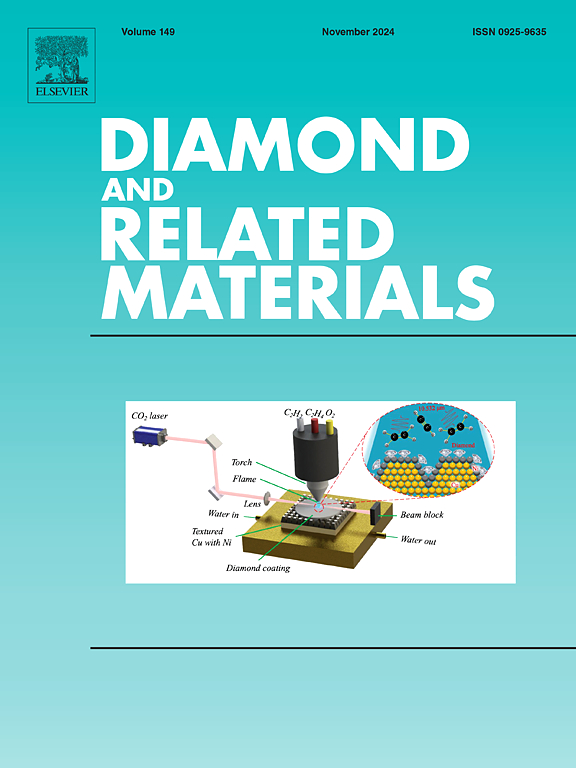Study on the preparation and properties of phospholipid-modified nanodiamond/polyvinyl alcohol biodegradable composite materials
IF 4.3
3区 材料科学
Q2 MATERIALS SCIENCE, COATINGS & FILMS
引用次数: 0
Abstract
Polyvinyl alcohol (PVA) is an excellent biodegradable material. To address its inherent disadvantages such as low mechanical properties, we studied an environmentally friendly method for preparing nanodiamond/polyvinyl alcohol (ND/PVA) composites, which significantly improved the performance of the composites. To address the key aggregation problem of nanodiamond (ND), we first homogenized the -COOH on the ND surface by thermal oxidation. Then the -OH on the phospholipid head formed hydrogen bonds with the -COOH on the ND surface and adsorbed on the ND surface. This was confirmed by infrared spectroscopy and thermogravimetric experiments. The repulsive force between the phospholipid alkyl chains effectively prevented the agglomeration of nanoparticles and improved the dispersibility and interfacial adhesion with the PVA matrix. The effects of nanoparticles on the structure, thermal properties and mechanical properties of the polymer matrix were studied by scanning electron microscopy, thermogravimetric analysis and tensile testing. The experimental results showed that 1.5 wt% ND-PL loading can achieve the optimal performance of PVA. Compared with PVA, the mechanical properties of ND/-PL/PVA-1.5 % were enhanced, with a 174.8 % increase in tensile strength and a 217.8 % increase in tensile modulus. The thermal stability of ND-PL/PVA-1.5 % was improved, and the heat resistance index (THRI) increased by 108.26 % compared with PVA, Tg increased to 61.79 °C.The thermal conductivity increased by 212.8 %. In addition, the addition of ND effectively improved the crystallinity and hydrophilicity of PVA. This broadened the path for the application of PVA.

磷脂修饰纳米金刚石/聚乙烯醇可生物降解复合材料的制备及性能研究
聚乙烯醇(PVA)是一种优良的可生物降解材料。针对纳米金刚石/聚乙烯醇(ND/PVA)复合材料力学性能低的固有缺点,研究了一种环境友好的制备方法,显著提高了复合材料的性能。为了解决纳米金刚石(ND)聚集的关键问题,我们首先用热氧化法在ND表面均匀化-COOH。磷脂头部的-OH与ND表面的-COOH形成氢键并吸附在ND表面。红外光谱和热重实验证实了这一点。磷脂烷基链之间的排斥力有效地阻止了纳米颗粒的团聚,提高了纳米颗粒的分散性和与PVA基体的界面附着力。通过扫描电镜、热重分析和拉伸测试研究了纳米颗粒对聚合物基体结构、热性能和力学性能的影响。实验结果表明,添加1.5 wt%的ND-PL可以达到PVA的最佳性能。与PVA相比,ND/-PL/PVA- 1.5%的拉伸强度提高了174.8%,拉伸模量提高了217.8%。ND-PL/PVA- 1.5%的热稳定性得到改善,耐热指数(THRI)比PVA提高了108.26%,Tg提高到61.79℃。导热系数提高了212.8%。ND的加入有效地改善了PVA的结晶度和亲水性。这拓宽了聚乙烯醇的应用途径。
本文章由计算机程序翻译,如有差异,请以英文原文为准。
求助全文
约1分钟内获得全文
求助全文
来源期刊

Diamond and Related Materials
工程技术-材料科学:综合
CiteScore
6.00
自引率
14.60%
发文量
702
审稿时长
2.1 months
期刊介绍:
DRM is a leading international journal that publishes new fundamental and applied research on all forms of diamond, the integration of diamond with other advanced materials and development of technologies exploiting diamond. The synthesis, characterization and processing of single crystal diamond, polycrystalline films, nanodiamond powders and heterostructures with other advanced materials are encouraged topics for technical and review articles. In addition to diamond, the journal publishes manuscripts on the synthesis, characterization and application of other related materials including diamond-like carbons, carbon nanotubes, graphene, and boron and carbon nitrides. Articles are sought on the chemical functionalization of diamond and related materials as well as their use in electrochemistry, energy storage and conversion, chemical and biological sensing, imaging, thermal management, photonic and quantum applications, electron emission and electronic devices.
The International Conference on Diamond and Carbon Materials has evolved into the largest and most well attended forum in the field of diamond, providing a forum to showcase the latest results in the science and technology of diamond and other carbon materials such as carbon nanotubes, graphene, and diamond-like carbon. Run annually in association with Diamond and Related Materials the conference provides junior and established researchers the opportunity to exchange the latest results ranging from fundamental physical and chemical concepts to applied research focusing on the next generation carbon-based devices.
 求助内容:
求助内容: 应助结果提醒方式:
应助结果提醒方式:


